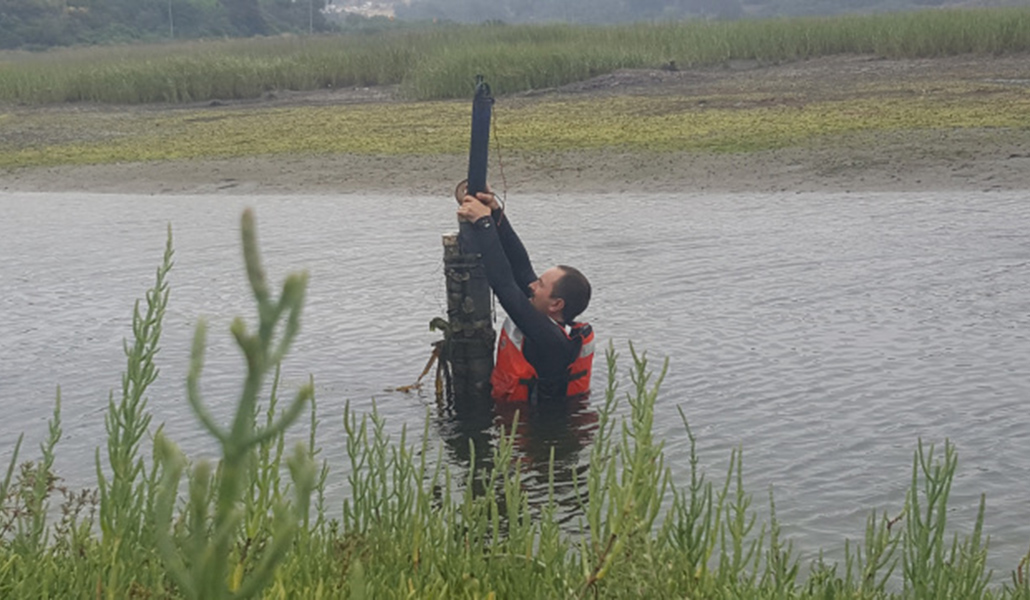Nothing and Everything
Follow ( 0 Followers ) X Follow E-mail : * Follow Unfollow

Bradley Nussbaum, Conservancy Habitat Management Director, measures lagoon water quality using a DataSonde. This instrument interprets data, including turbidity, pH, salinity, temperature, and dissolved oxygen levels.
The health of our waters is critical. Many regulatory eyes are on it—from creeks and culverts—to beaches and bays.
We are in the Escondido watershed, named for its largest creek. The Escondido Creek extends approximately 28 miles from its headwaters in Bear Valley, east of Lake Wohlford, through the City of Escondido. It flows through unincorporated areas, including Harmony Grove/Elfin Forest, and Rancho Santa Fe. It continues through Olivenhain and the cities of Encinitas and Solana Beach, and ultimately through San Elijo Lagoon and out to the Pacific Ocean.
This is the inlet, the lagoon’s connection with the Pacific Ocean, where Escondido Creek ends and mixes with the tides at Cardiff State Beach.
Your Conservancy, along with county and state agency partners, engages in continuous water quality monitoring. Our monitoring role expanded last fall when we began to guide Reviving Your Wetlands, the restoration of San Elijo Lagoon.
Striped Mullet often leap from lagoon waters, to the delight and surprise of visitors on the trail. Photo: Ray Spencer
One of our roles in guiding restoration is to ensure that our waters — fresh water, salt water, and brackish — are within healthy ranges—for the organisms that live in the lagoon waters. Not only in the tidal channels, but also in nearshore conditions.
Our staff conducts water quality testing by conducting weekly samples, downloading data in continuous monitoring stations, and conducting storm event sampling—reported to the City of San Diego Storm water Pollution Prevention Program.
During restoration, pH and turbidity are two of the most critical water quality parameters we measure, which we report to state regulators to ensure compliance of the project and our permit conditions.
For more information about the Conservancy’s continuous water quality monitoring (prior to and during restoration) click here.
Heading to the beach? If you are curious about current water quality along the approximate 70-mile San Diego coastline, including multiple locations along the area we are placing sand, visit the County of San Diego Department of Environmental Health’s Beach and Bay Water Quality site (and download the App). Click here to visit 24/7 updated water quality readings. The Beach and Bay Water Quality Monitoring Program monitors bacteria levels and provides advisories and closures as needed. This program protects the public health of millions of residents and visitors each year through beach water testing, public education, outreach, and beach postings.
This is a screenshot of the Beach & Bay Water Quality monitoring map, updated 24/7 by the San Diego County Department of Environmental Health.
Reviving Your Wetlands is all about creating a healthier wetland. In just a couple of years, the tidal channels will be deeper and wider and reach farther east. Envision the flow of healthier waters and an increase in wildlife diversity at San Elijo Lagoon. New trail connections will be worth the wait.
Thank you for following Lagoon Connections. If you’re reading this through a shared link, we invite you to add your email for instant updates in the restoration of San Elijo Lagoon (click Follow in the lower right corner of the blog’s home page).